Is homemade salad dressing worth it? Plus our 4 favorite recipes – simple, flavorful, and made with clean ingredients.
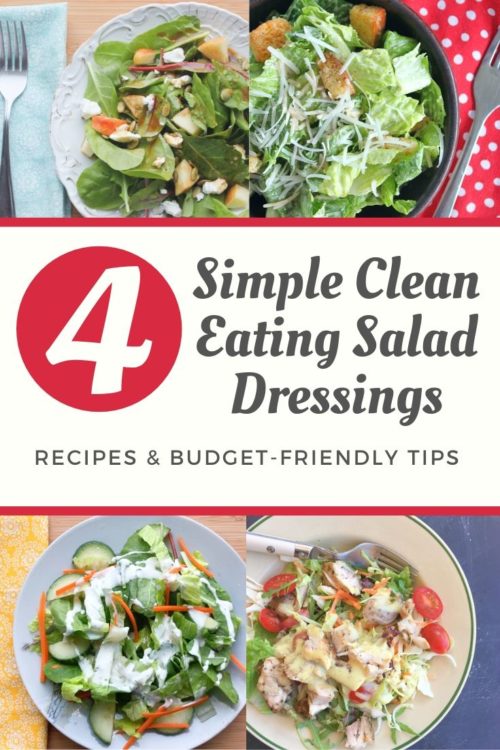
This post contains affiliate links. You can view our full disclosure policy here.
One of the first ways we started eating healthier on a tiny budget involved condiments. We wanted to nourish our bodies with ingredients we could pronounce, and we didn’t have a lot of money to spend on expensive oils and
In fact, we could barely afford any vinegar or oils. Only the really versatile and frugal ingredients made it into the kitchen.
Is Homemade Salad Dressing Worth It?
Your time is precious, and you probably don’t want to make everything from scratch if you can help it. Only the most important items make the cut.
Here is why salad dressing makes the cut for me: When we decide to eat
So instead of taking my fairly healthy salad and drizzling it with a bunch of questionable ingredients, I want a salad dressing that tastes good and is made with simple, powerful ingredients.
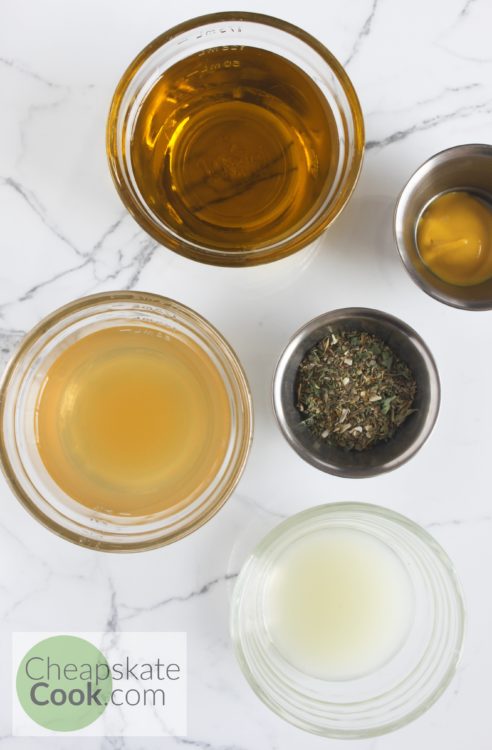
Every family is unique, but here are 4 of the most popular (and our favorite) salad dressing recipes where we live:
Is Homemade Salad Dressing Healthy?
The great thing about making your own salad dressing is that you can control the ingredients. Have an egg allergy? Make Caesar with egg-free mayo without paying for special vegan dressing. Want to avoid questionable oils? Buy olive oil in bulk from Costco for affordable olive oil-based dressings.
Need something that’s Whole30 compliant and made with normal ingredients already in your pantry? Try our Greek dressing. It’s our favorite, hands down – even if we didn’t care about it being healthy.
The Ranch and Caesar dressings call for mayonnaise. You can use any kind you like – the cheap generic brand from Walmart, Fancy Vegan Mayo from Whole Foods, or make it yourself with this failproof recipe!
(Egg-free or scared of raw egg? Try this recipe! We’ve made it many times and it works!)
Making our salad dressing takes about 2 minutes every 2 weeks, and we love that it’s made with simple food.
How to Make Homemade Salad Dressing
Homemade salad dressing is as simple as gathering ingredients, dumping them into a jar or blender, and combining them. The end.
I like the smooth, creamy texture we get when we blend our dressings (plus it’s super fast and clean up is a breeze with our Nutribullet). But you can also use a whisk, fork, or spoon, and mix thoroughly.
For dressings I don’t blend, I just pour them into the jar, screw the lid on tightly, and shake the jar.
Budget-Friendly Salad Dressing
Some stores carry salad dressings that are fairly good for you. But they cost a lot more. When you’re on a tight budget, you can’t afford to spend a lot of money on condiments.
You might not stock your kitchen with a huge variety of oils, vinegar,
What to Store Homemade Salad Dressing In
All you need is a clean repurposed salsa jar or a pint-size canning jar (I prefer wide mouth for easier cleaning).
However, to prevent messes and spills, (and children who pour out too much dressing) we use a salad dressing bottle we found at a thrift store. It works great, but I like this one or this one better because they look less like a 90’s kitchen thrift store find.
You can also use hot sauce bottles or old glass salad dressing bottles – just make sure you wash them out really well!
If your salad dressing bottle has a small opening, I highly recommend a small funnel like this. It saves us so much clean-up and wasted ingredients.
So to sum it up, you can store homemade salad dressing in:
- small mason jars
- simple salad dressing bottles with handy pour lines
- empty hot sauce bottles (washed well)
- cute salad dressing bottles
- empty glass salad dressing bottles (washed well)
- check your thrift store! I found ones like this for only a few dollars.
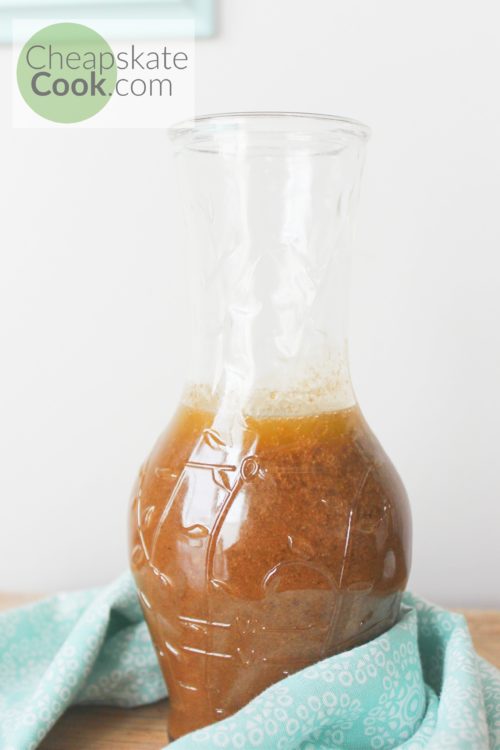
Where to Store Homemade Salad Dressing
We store our dressing in the refrigerator because we generally use ingredients that need to be refrigerated – lemon juice, mustard, yogurt, mayonnaise, etc.
I’ve heard that storing olive oil in the fridge is not good for it, and to that end, I recommend simply using up your salad dressing within a week or two.
How to Keep Homemade Salad Dressing from Solidifying
If you have ever tried homemade salad dressing before, you know what a problem this is. Solving it depends on what kind of oil you use for your salad dressing. Olive oil solidifies in cold temperatures, so if you want to use extra virgin olive oil, there’s not much we can do about solidifying.
However, plenty of other oils stay liquid when refrigerated. There is a lot of debate about which oils are better for you and which harmful. Our list has changed over the years, but right now, we use these:
- Extra virgin olive oil
- Avocado oil
- Grapeseed oil
Do your research and decide which ones you are comfortable with.
We still prefer olive oil for our oil-based dressings, and because we’ve been doing it for so long, the solid dressing doesn’t bother us. We either take it out to thaw 30 minutes or an hour before our meal, or we pop it in the microwave for a few seconds.
How Long Does Homemade Salad Dressing Last?
This depends on what you use in your dressing. Generally. I try to use mine up within 2 weeks. However, if everything in the dressing lasts a long time – like in our Greek Dressing, I’ll let it sit a little longer (not that it really lasts that long at our house anyway). However, if I use fresh herbs, fresh lemon juice, etc. I use it up more quickly.
These 4 salad dressing recipes use simple, budget-friendly ingredients.
Allergy-Friendly Salad Dressing
We have dealt with dairy and gluten issues over the years, and recently, one of our kids was diagnosed with corn and egg sensitivities. Our go-to salad dressings have to address that.
These 4 salad dressing recipes accommodate several food sensitivities, and you can make them work for you!
The Greek dressing is our favorite and it is the cleanest.
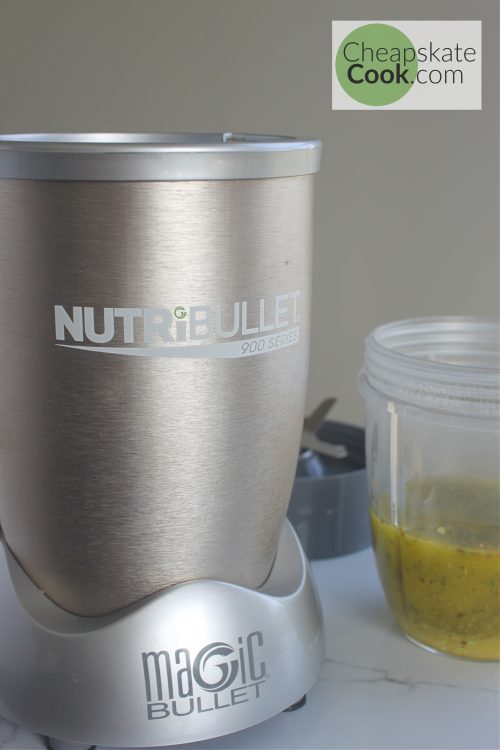
Equipment for Making Salad Dressing
All you really need are some measuring spoons and cups, and a pint-size jar (I prefer wide mouth for easier cleaning) or one of the other salad dressing bottle ideas above.
Again, if your bottle has a really small opening (like a hot sauce bottle) I highly recommend a small funnel like this. It has saved us SO much time and spills.
We blend our dressings in a small blender. You can use a Magic Bullet or Nutribullet (which is what we have). Or if you have a small-mouth canning jar, I’ve heard you can use them in your standard-size blender base. We have had both the classic Nutribullet and Nutribullet Pro, and we love both.
Greek/Italian Dressing
This recipe is by far our favorite salad dressing. We use Greek dressing just like a good Italian dressing. It goes on our favorite budget-friendly salad, pasta salad, tomato and cucumber salad, and we drizzle it over plates of Yellow Rice and Chicken (or Beef!) with steamed veggies (full recipe for that in Dinner for a Dollar).
- Dairy-free
- Gluten-free
- Nut-free
- Egg-free
- Vegan
- Paleo
- Whole30
- Keto
Get the recipe for Greek Dressing here!
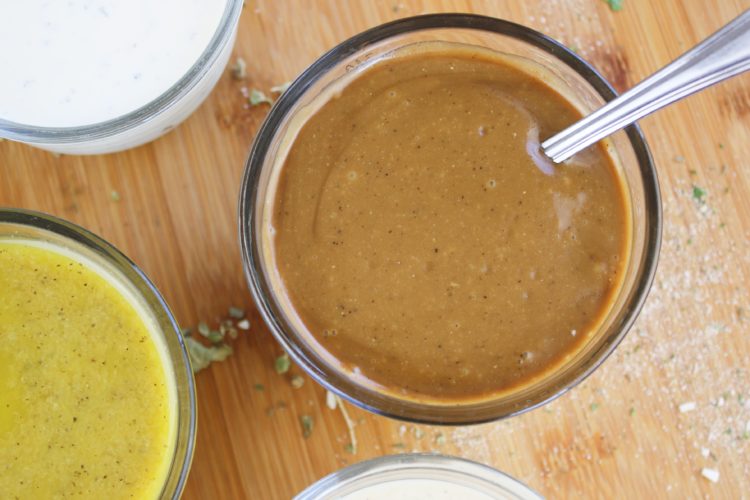
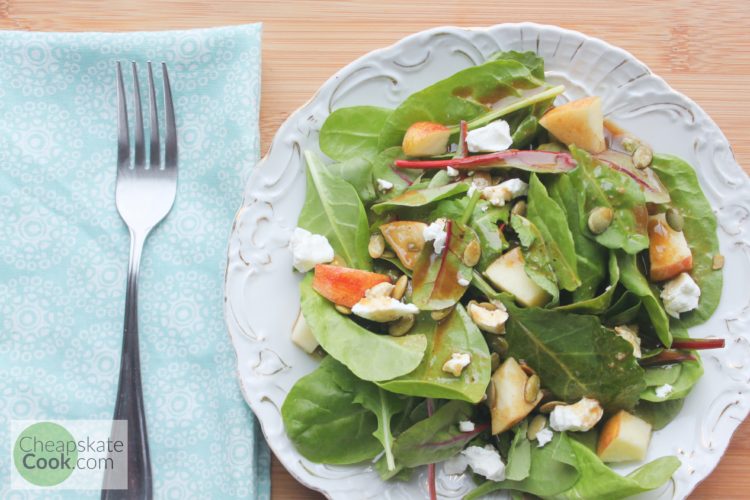
Balsamic Vinaigrette
It took me way too long to learn why my spring mix and spinach salads always tasted weird. Because I grew up in the ’90s, Ranch dressing was our go-to salad topper. While it might make kids eat broccoli, ranch dressing does not taste good on dark green leafy veggies – specifically spinach, spring mix, and kale.
But you know what does makes them taste amazing? Balsamic vinaigrette.
We use balsamic vinaigrette on our Autumn Spring Mix Salad and whenever we get markdowns on those giant boxes of spring mix or spinach from Kroger.
This recipe for Balsamic Vinaigrette is:
- Dairy-free
- Gluten-free
- Nut-free
- Egg-free
- Paleo
Get the recipe for Balsamic Vinaigrette here!
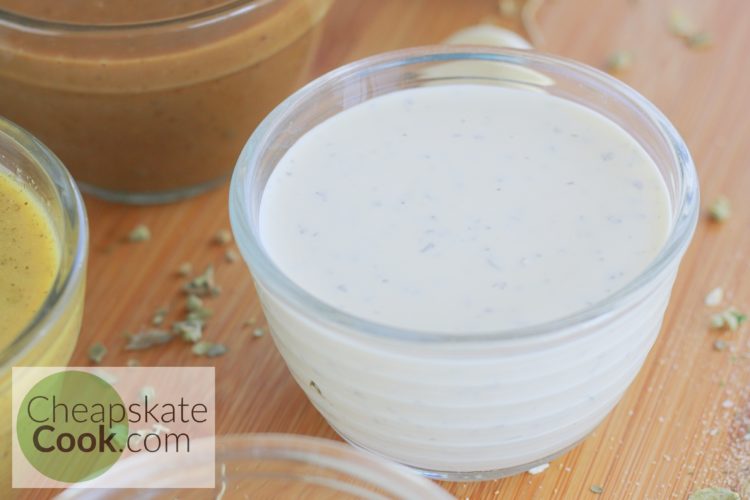
Classic Ranch Dressing
Whether you’re coaxing your kids to eat baby carrots and cauliflower or you just love a classic creamy ranch dressing, now you can make it yourself using simple budget-friendly food.
This recipe calls for sour cream (or yogurt) and mayonnaise, so if you are avoiding eggs or dairy, adjust the recipe as needed. If you want to make your ranch dressing extra clean, you can use this homemade fool-proof mayonnaise or get a cleaner brand from the store. Because we don’t use mayonnaise very often, we like this brand, and we normally get it from Costco.
We use Kate’s Ranch dressing recipe here!
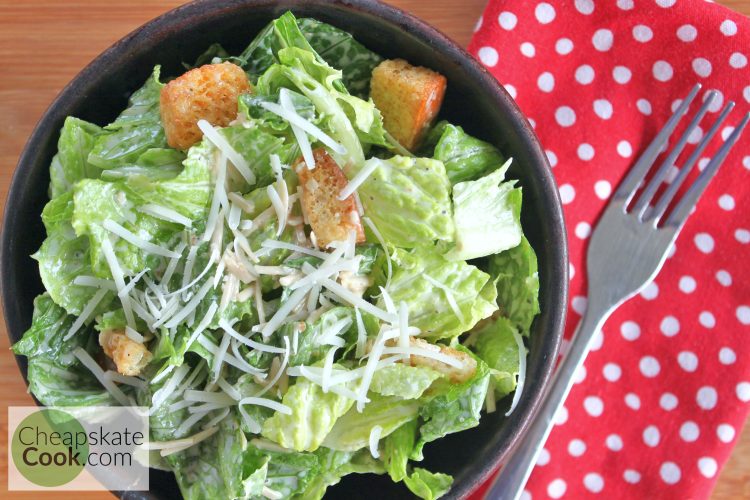
Caesar Dressing
This was the salad dressing that turned my dad and brothers into salad eaters. It’s creamy, tangy, and far better than any store brand I have ever tried. But it uses simple, normal ingredients we already keep in our kitchen.
Get the recipe for creamy Caesar Dressing here!
What You Can Do Now:
Which of these salad dressings would you try?
If you found this post helpful, let us know! Leave a comment, share it on Facebook or Pinterest, and follow us on Instagram or YouTube for more!
Slash your grocery budget and feed your family real food! Get simple, frugal, real food menu plans every month for FREE in the Cheapskate Cooks’ 1-Min Email. Get your first one here.

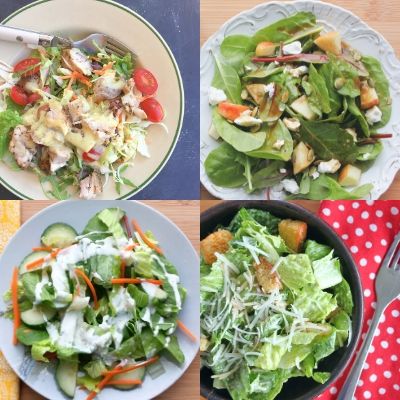
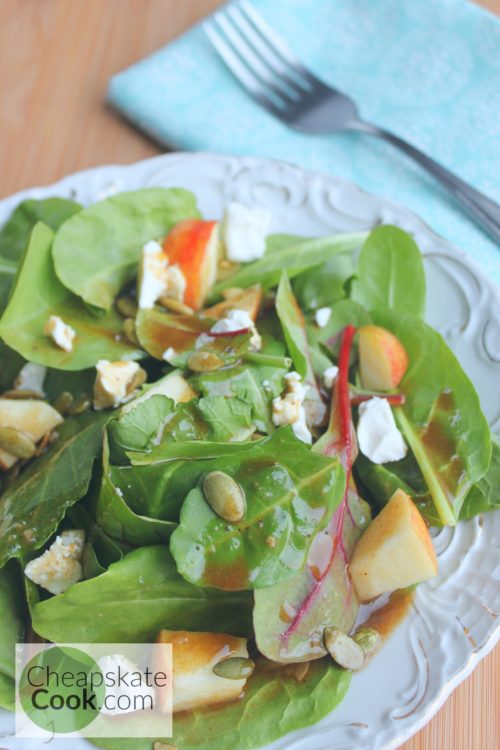
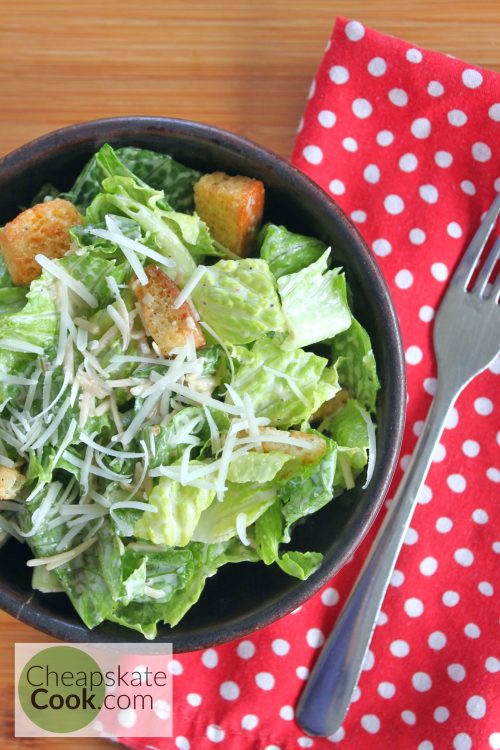
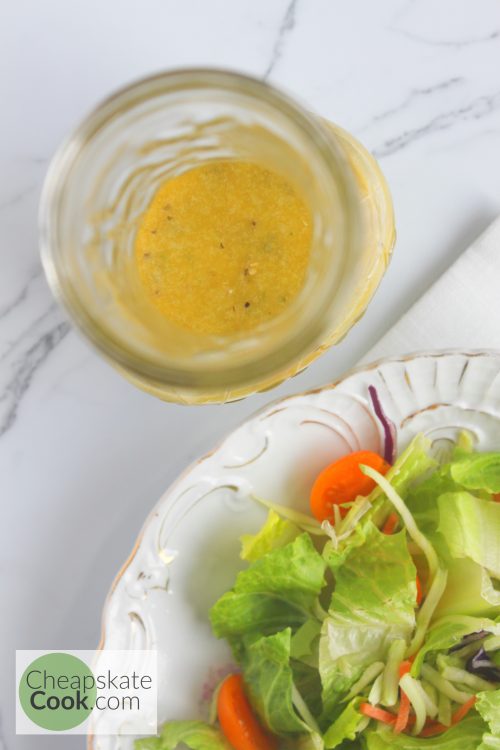
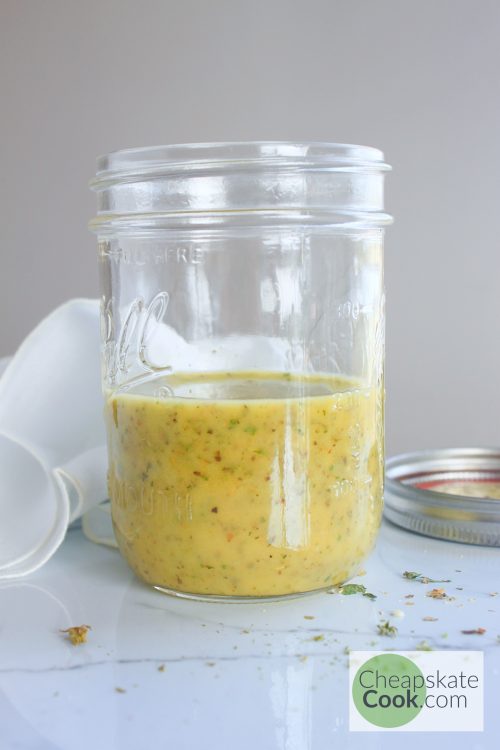
Trackbacks/Pingbacks